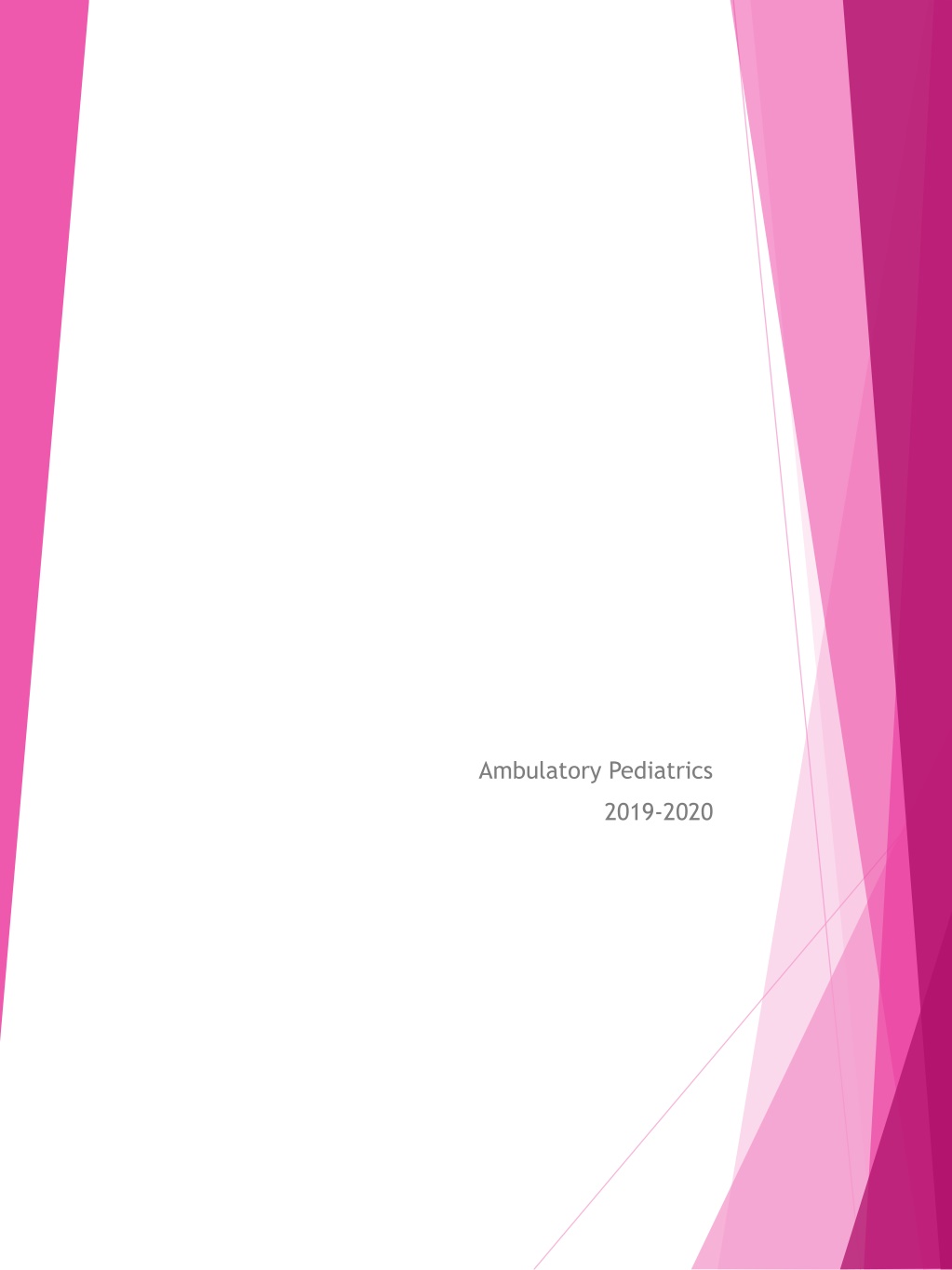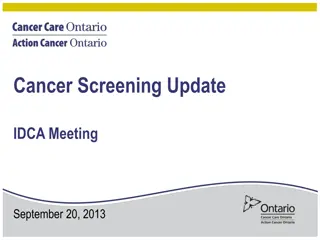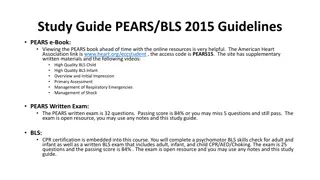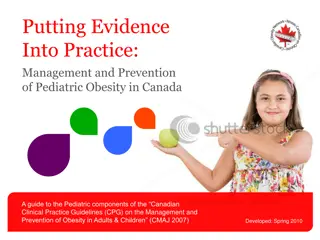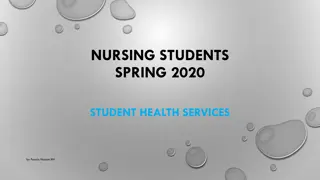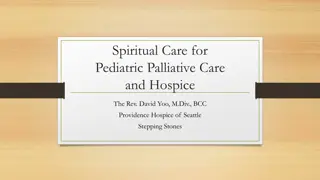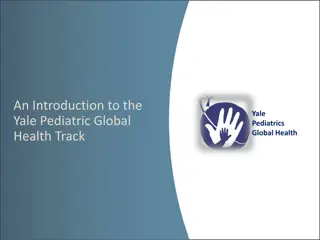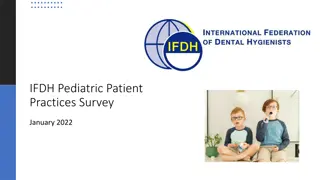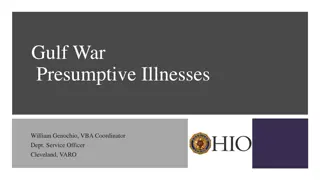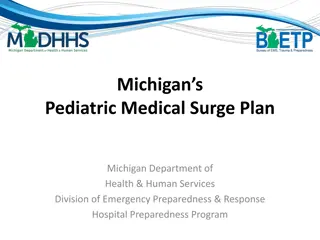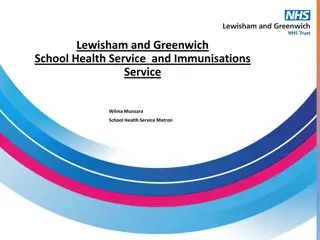Pediatric Health Education Slides for Common Illnesses and Screenings
Educational slides covering topics such as cholera, dengue fever, newborn screening, and vision assessment. The content includes information on causes, symptoms, treatments, and prevention methods for these health issues. Helpful visuals and guidance are provided for maintaining good health practices.
Download Presentation

Please find below an Image/Link to download the presentation.
The content on the website is provided AS IS for your information and personal use only. It may not be sold, licensed, or shared on other websites without obtaining consent from the author. Download presentation by click this link. If you encounter any issues during the download, it is possible that the publisher has removed the file from their server.
E N D
Presentation Transcript
Ambulatory Pediatrics 2019-2020
CHOLERA Cause Vibrio cholerae bacteria Mode of Transmission Eating of food or drinking of water contaminated with human waste. Signs and Symptoms Sudden onset of frequent painless watery stools a. Vomitting b. Rapid dehydration (e.g. sunken eyeballs, wrinkled and dry skin) c. ImmediateTreatment Replace lost body fluid by giving Oral Rehydration Solution (ORESOL) or a homemade solution composed of 1 teaspoon of salt, 4 teaspoons of sugar mix to 1liter of water. If diarrhea persists, consult your health workers or bring the patient to the nearest hospital. Prevention and Control Drink only safe and clean water. If unsure, boil drinking water (Upon reaching boiling point, extend boiling for two or more minutes), or a. Do water chlorination. b. Keep food away from insects and rats by covering it. c. Wash and cook food properly. d. Sanitary disposal of human waste. e. Use toilet properly and clean toilet everyday. f. Wash hands with soap after using toilet and before eating. g. Keep surroundings clean to prevent flies and other insects and rodents from breeding. h. https://www.doh.gov.ph/Health-Advisory/Cholera
NEWBORN SCREENING ONCE WITH POSITIVE NEWBORN SCREENING RESULTS, CHECK IF NEWBORN SCREENING FACILITY COORDINATED WITH THEM AND ADVISED TO DO CONFIRMATOY TESTING. IF NOT, COORDINATE WITH NEWBORN SCREENING COORDINATOR WRITTEN IN THEIR RESULTS PAPER. ONCE WITH POSITIVE CONFIRMATORY NEWBORN SCREENING RESULTS, OR SYMPTOMATIC OF HIGHLY SUSPICIOUS FOR INBORN ERROR OF METABOLISM, INFORM GENETICS PHONE: 09285060962 Read attached here:
VISION SCREENING VISION ASSESSMENT 1. PUPILS 2. GROSS ABNORMALITIES 3. EOM + SENSORIMOTOR EVALUATION 4. POSTERIOR POLE EVALUATION: RETINA, OPTIC 5. NERVE, VESSELS, MEDIA NEEDS: Snellen chart Eye cover Ophthalmoscope Check for Red Orange Reflex!
DENTAL CARE From Dr. Memorando s Lecture PGH PEDIA POST GRAD 2019 REFER PEDIATRIC PATIENTS TO DENTISTS BY 6 TO 8 MONTHS OF AGE ANTICIPATORY GUIDANCE Guided toothbrushing until 7 years of age First permanent tooth to erupt: 1stmolars and incisors by 6 years of age Wean from bottle feeding by 12 to 14 months Avoid putting the baby to sleep through bottle feeding Limit frequency of snacking, train to eat full meal Avoid distracted eating (slow chewing puts the child to develop caries) Injury prevention Limit sugar intake REGULAR DENTAL VISIT
APPROACH TO PREVENT DRY SKIN *From Pedia PGH Postgrad 2019 Determine etiology and contributing factors Use luke warm water Use mild soaps Reduce bathing time to 10 mins Apply moisturizers *SUNPROTECTION IN CHILDREN Avoid sun from 9AM to 4PM Use SPF 25 and it blocks more than 96% UVB Amount of sunscreen to be used = 2mg/cm2 Reapply every 1 to 2 hours Apply sunscreen 30 mins prior sun exposure Use eyeglasses Oil-based emulsions of inorganic filters (titanium dioxide, zinc oxide)
